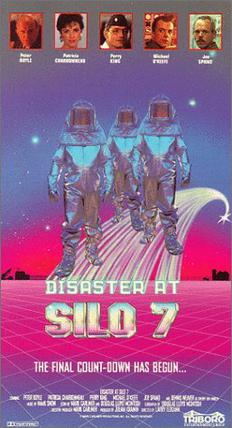| Disaster at Silo 7 | |
|---|---|
 | |
| Genre | Drama Science Fiction Thriller |
| Written by | Douglas Lloyd McIntosh |
| Directed by | Larry Elikann |
| Starring | Michael O'Keefe Perry King Peter Boyle Patricia Charbonneau |
| Music by | Mark Snow |
| Country of origin | United States |
| Original language | English |
| Production | |
| Executive producer | Mark Carliner |
| Producer | Julian Krainin |
| Cinematography | Roy H. Wagner |
| Editor | Peter V. White |
| Running time | 96 minutes |
| Production company | Mark Carliner Productions |
| Original release | |
| Network | ABC |
| Release | November 27, 1988 |
Disaster at Silo 7 is a 1988 American made-for-television thriller-drama film directed by Larry Elikann. [1] [2] It is loosely based on the 1980 Damascus Titan missile explosion.